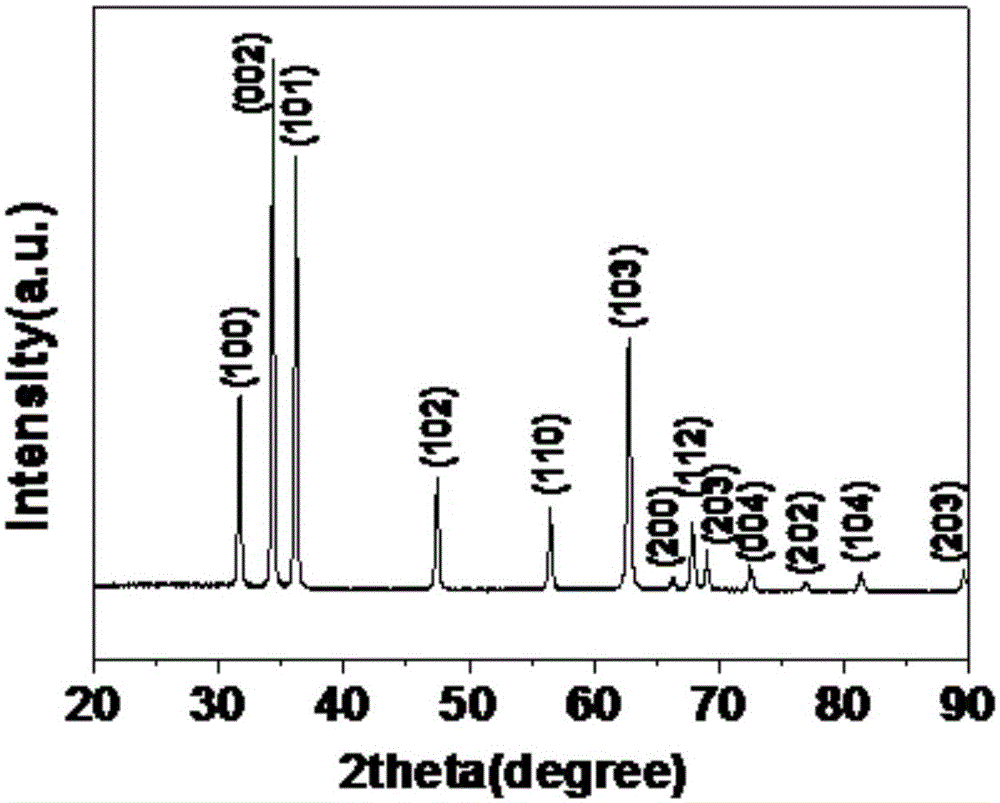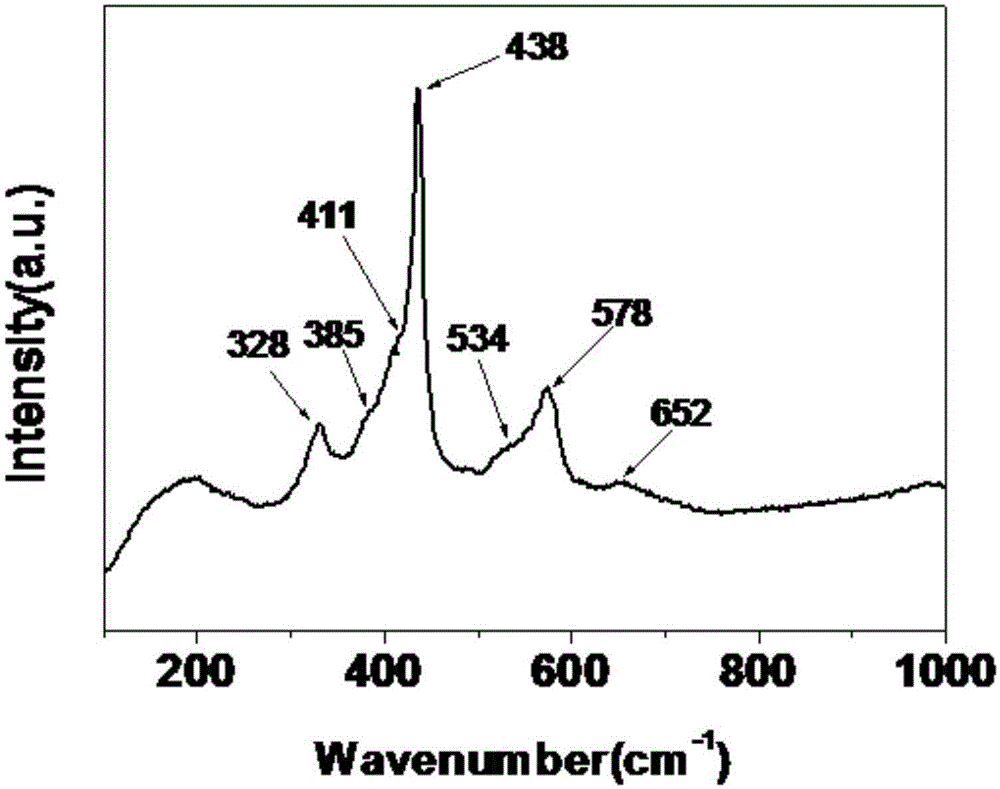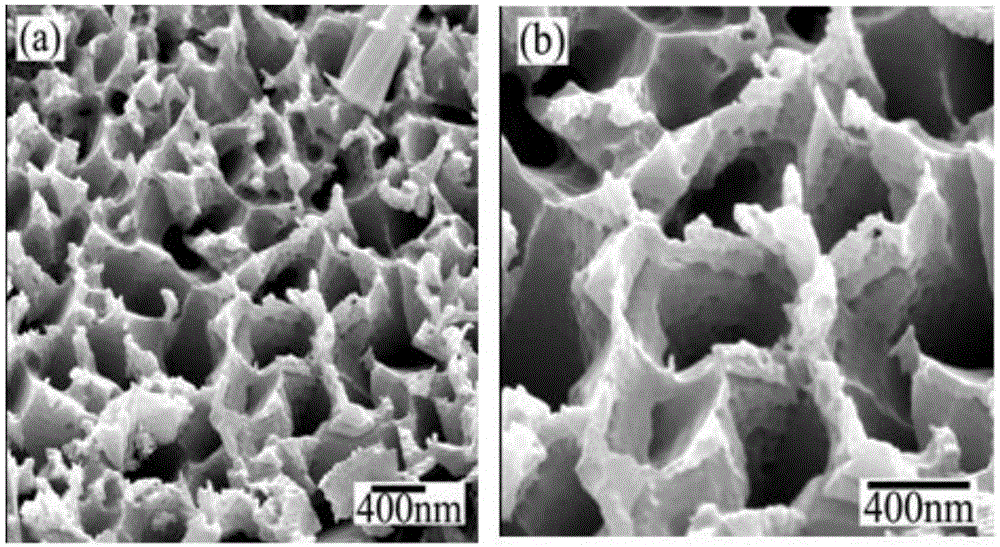Growth method for ZnO nanotube array
A nanotube array and growth method technology, applied in nanotechnology, metal material coating process, etc., to achieve the effects of convenient large-scale growth, simple operation and low cost
- Summary
- Abstract
- Description
- Claims
- Application Information
AI Technical Summary
Problems solved by technology
Method used
Image
Examples
Embodiment 1
[0032] The specific steps for preparing ZnO nanotube arrays in this embodiment are as follows:
[0033] Step 1: Dissolve NaOH completely in a certain amount of deionized water, and adjust the pH of the NaOH solution to 14;
[0034] Step 2: transfer the prepared NaOH solution to a polytetrafluoroethylene reactor;
[0035] Step 3: Put the zinc sheet in 5% dilute hydrochloric acid for 10 seconds to remove the surface oxide layer, take it out and rinse it with deionized water three times repeatedly, insert the treated Zn sheet with a size of 1cm*1cm into the bottom of the reaction kettle, (zinc sheet flat Put it on the bottom of the reactor, put a zinc sheet in each reactor, and completely submerge in the NaOH solution) to seal the reactor;
[0036] Step 4: Put the sealed reactor into a drying oven at 150°C for 15 hours, then cool the reactor at room temperature, and take out the Zn sheet substrate;
[0037] Step 5: Wash the zinc flake substrate in step 4 three times with deioni...
Embodiment 2
[0044] Embodiment two: comparative example
[0045] Step 1: Dissolve NaOH completely in a certain amount of deionized water, and after sufficient magnetic stirring, adjust the pH of the NaOH solution to 14
[0046] Step 2: transfer the NaOH solution prepared in step 1 to a polytetrafluoroethylene reactor;
[0047] Step 3: Insert the treated Zn sheet with a size of 1cm*1cm into the bottom of the reaction kettle, put a zinc sheet in each reaction kettle, completely immerse in the NaOH solution, and seal the reaction kettle;
[0048] Step 4: Put the sealed reaction kettle into a drying oven at 80°C for 24 hours, then cool the reaction kettle at room temperature, and take out the Zn sheet substrate;
[0049] Step 5: Wash the zinc flake substrate in step 4 three times with deionized water, and dry it in a drying oven at 70°C.
[0050] The same Hitachi, S-570 electron microscope is used to scan the material prepared in Example 2 to obtain the scanning electron micrograph. Figure...
PUM
| Property | Measurement | Unit |
|---|---|---|
| thickness | aaaaa | aaaaa |
| diameter | aaaaa | aaaaa |
Abstract
Description
Claims
Application Information
 Login to View More
Login to View More - R&D
- Intellectual Property
- Life Sciences
- Materials
- Tech Scout
- Unparalleled Data Quality
- Higher Quality Content
- 60% Fewer Hallucinations
Browse by: Latest US Patents, China's latest patents, Technical Efficacy Thesaurus, Application Domain, Technology Topic, Popular Technical Reports.
© 2025 PatSnap. All rights reserved.Legal|Privacy policy|Modern Slavery Act Transparency Statement|Sitemap|About US| Contact US: help@patsnap.com



